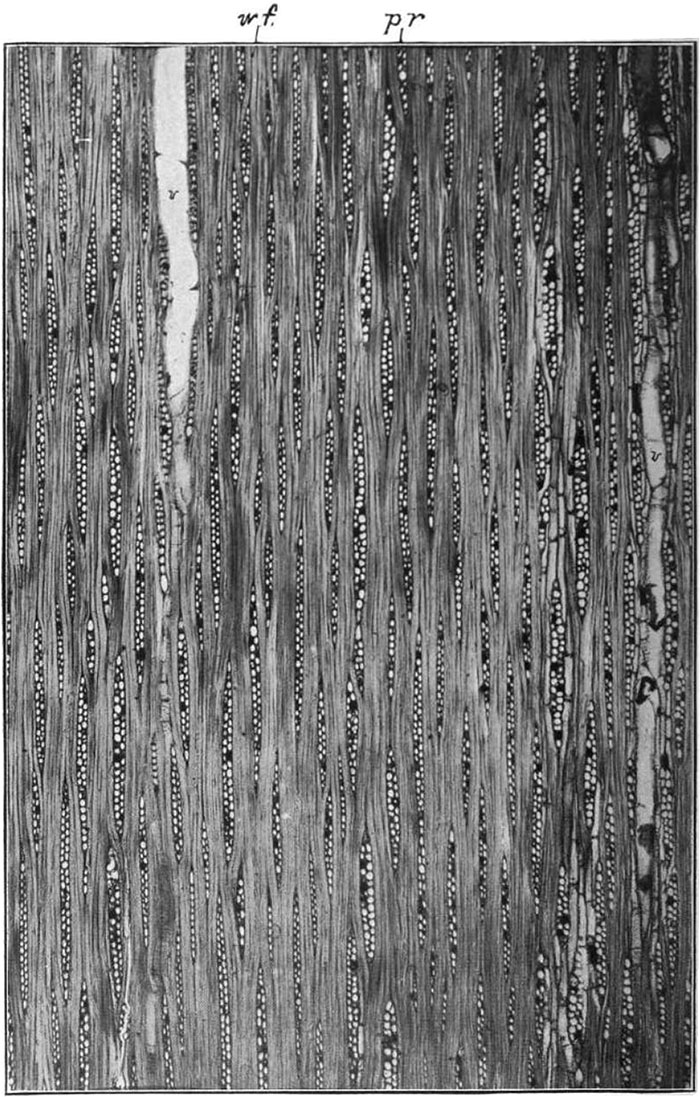this extraordinary freedom from decay

*
Tangential Section of Greenheart Wood.
r., vessel; p. r., pith ray; w. f., wood fiber.
Magnified 50 diameters.
in C(layton). D(issinger). Mell (1875-1945 *) and W. D. Brush, Greenheart. USDA / Forest Service Circular 211 (1913)
USFS Circulars, issues 211-216
UCLA copy, digitized Nov 10, 2014
—
Greenheart (Nectandra rodioei Schomb.) is a South American and West Indian tree belonging to the laurel family (Lauraceae)... the best grades surpass iron and steel in durability when placed in water or in contact with the soil.
This extraordinary freedom from decay is due in part to the presence in the wood of an alkaloid known as biberine, and in part to the presence of resinous substances known as tyloses. These latter consist of reddish-brown masses of parenchymatous (living) cells growing in solid masses within vessel cavities, often completely filling them. As they develop with the growth of the tree they turn dark, sometimes coloring the wood nearly black.
It is the extent of their development, and consequently the age of the tree, which in large measure determines the color of the wood, thus giving rise to three varieties — yellow, gray, and black greenheart — recognized in the trade. As might be expected, the black variety is the most durable...
p 5
tags:
alkaloids; decay; laurel
C. D. Mell & W. D. Brush, Greenheart (1913)